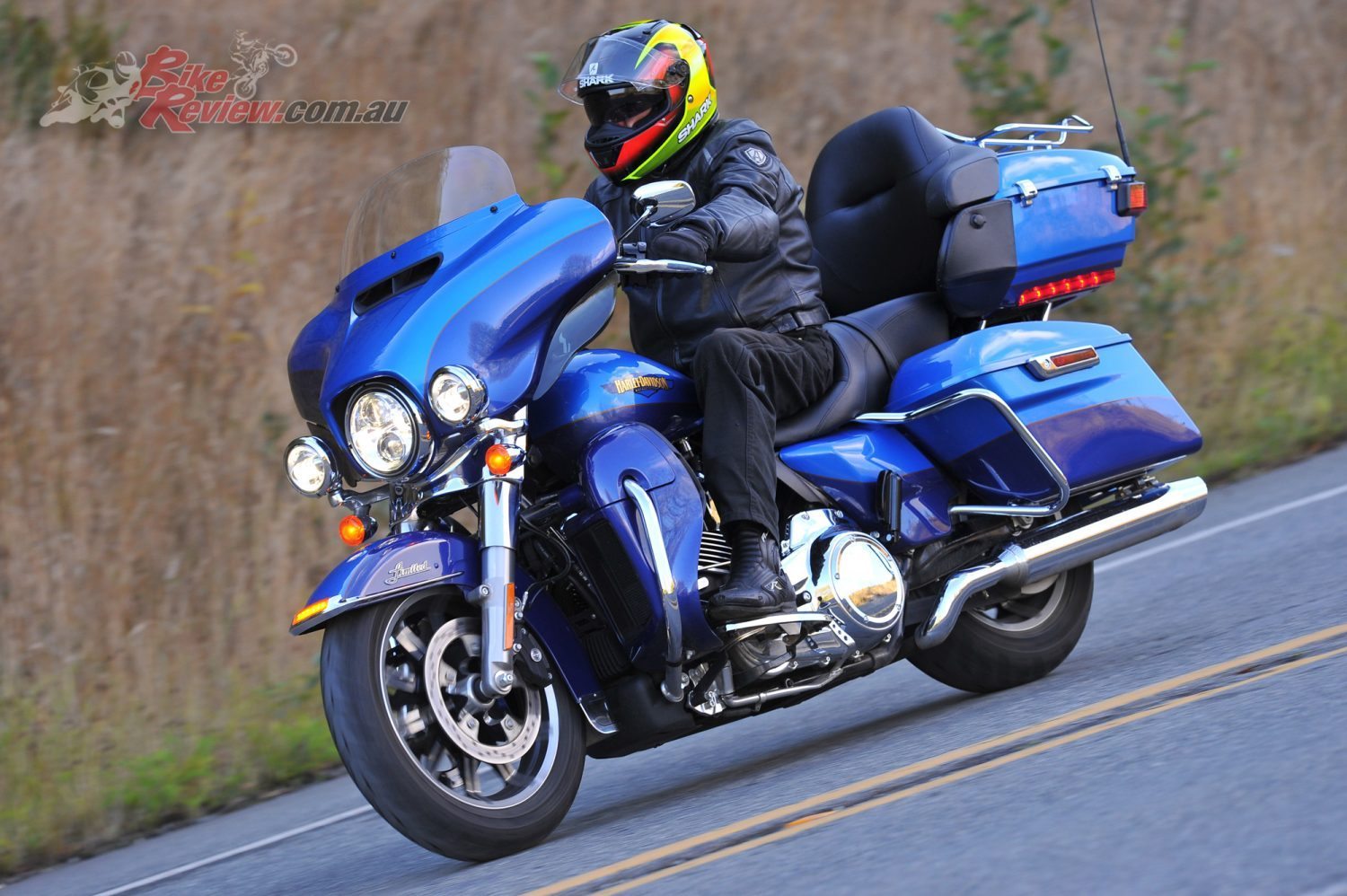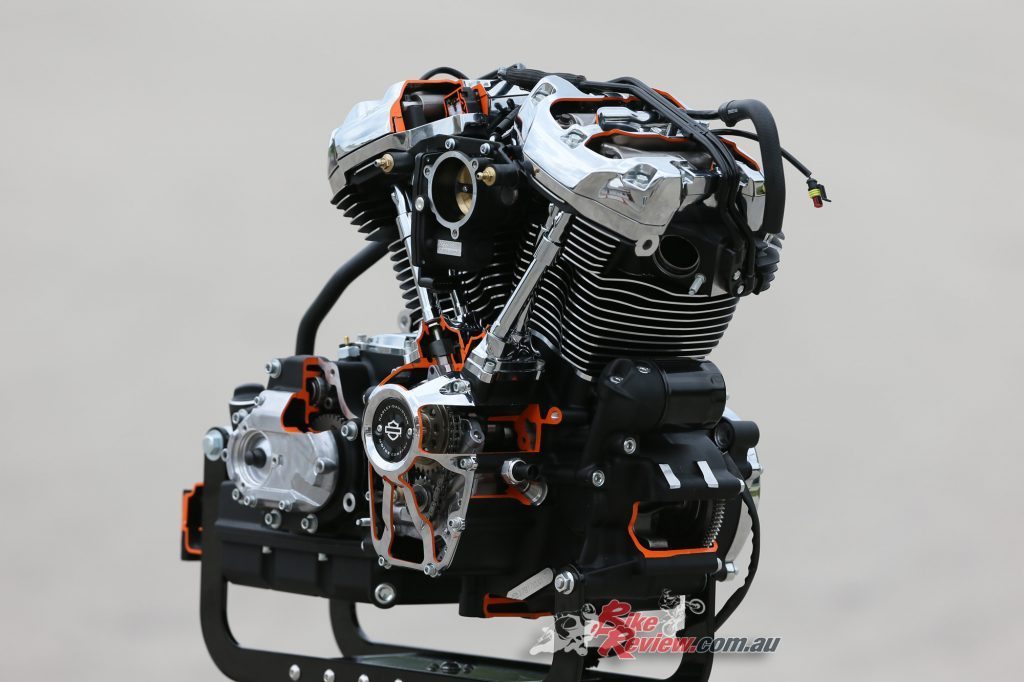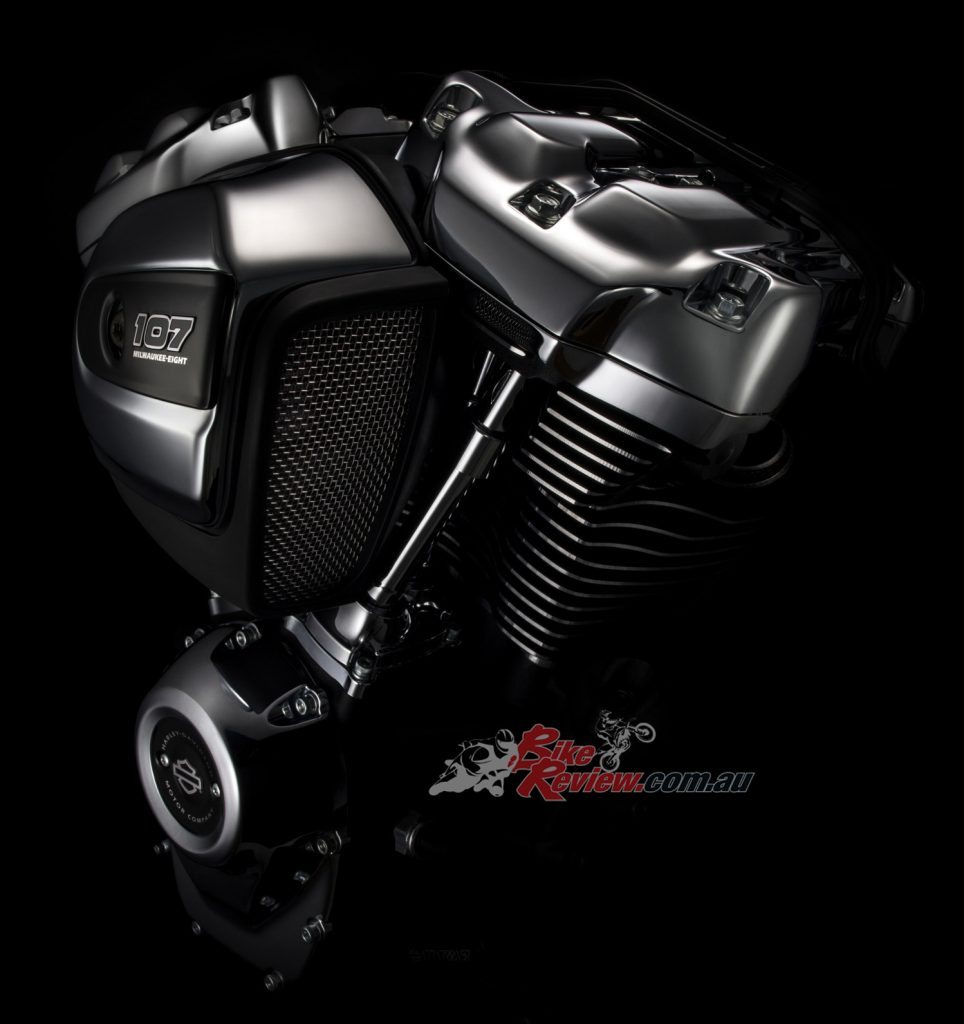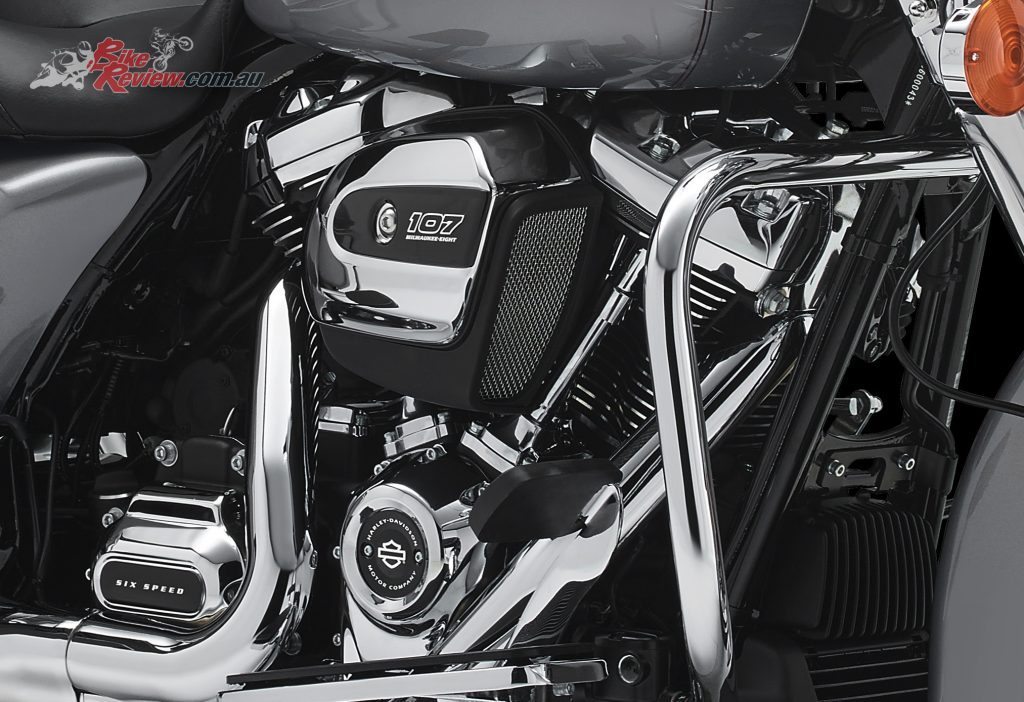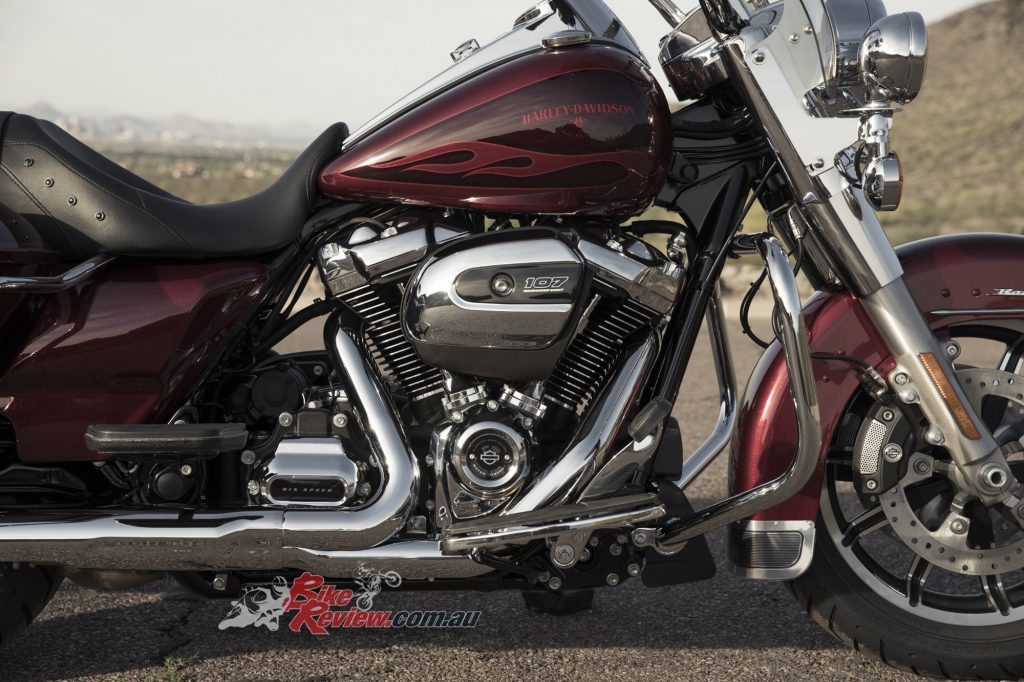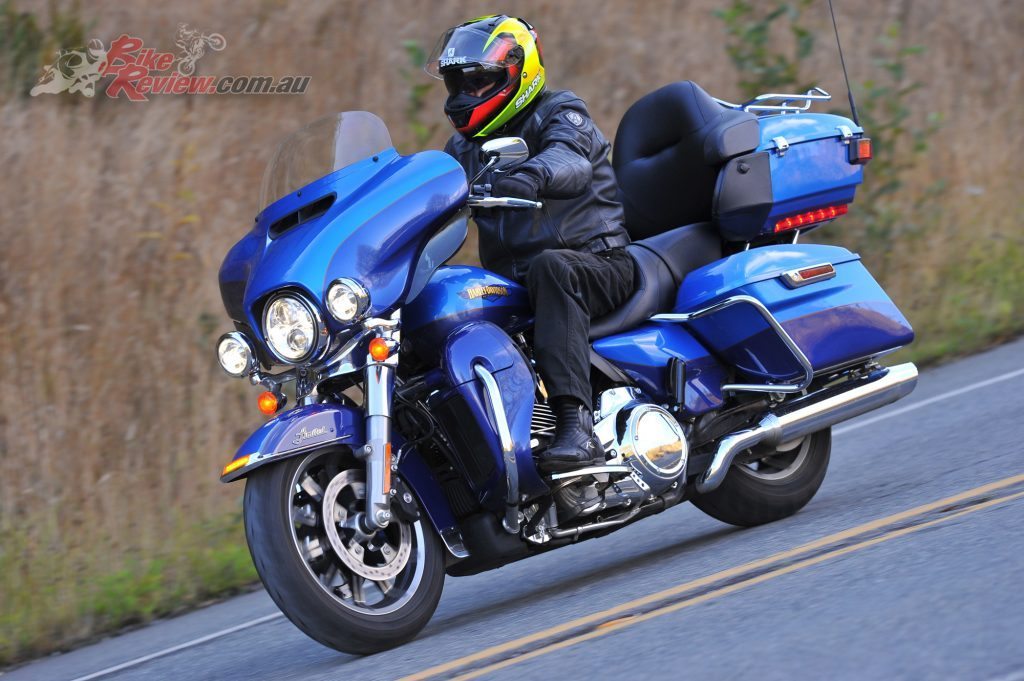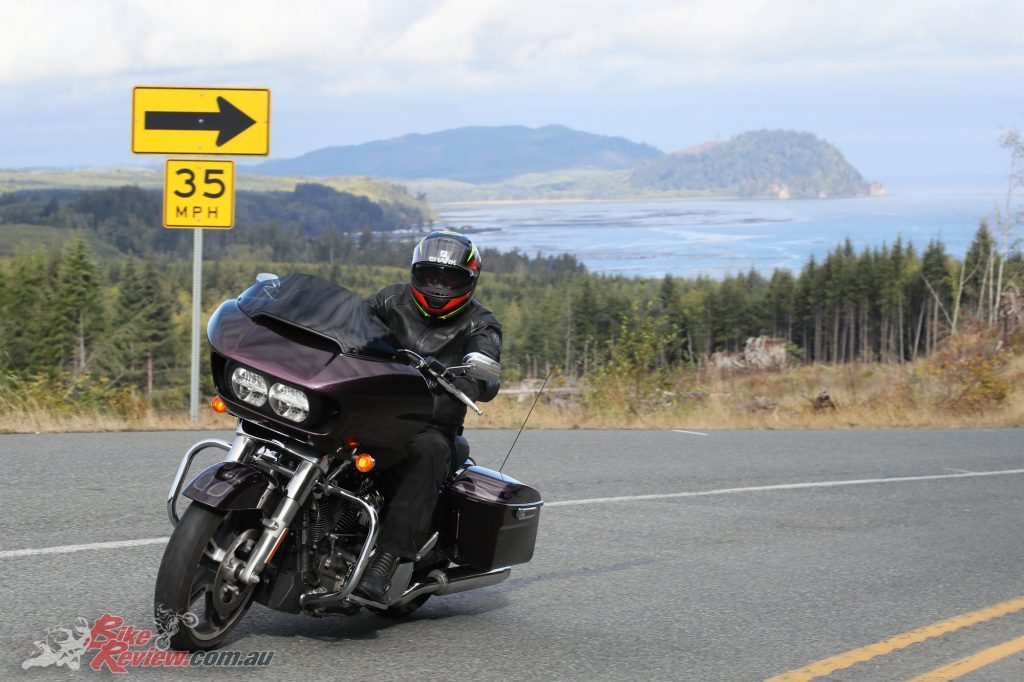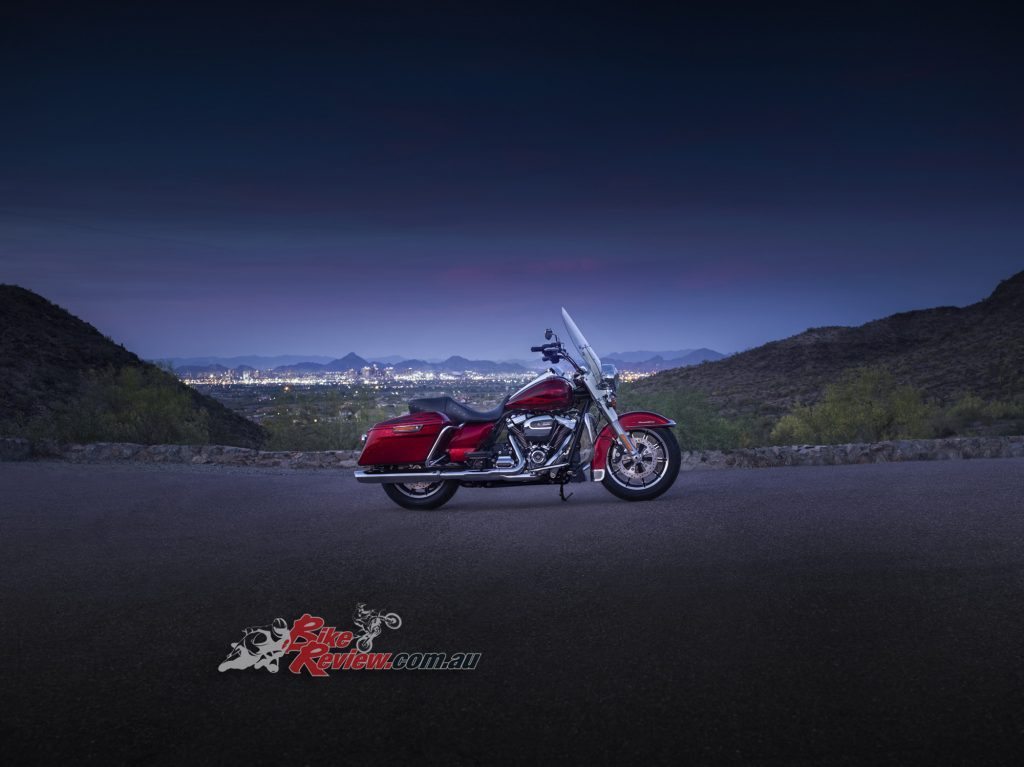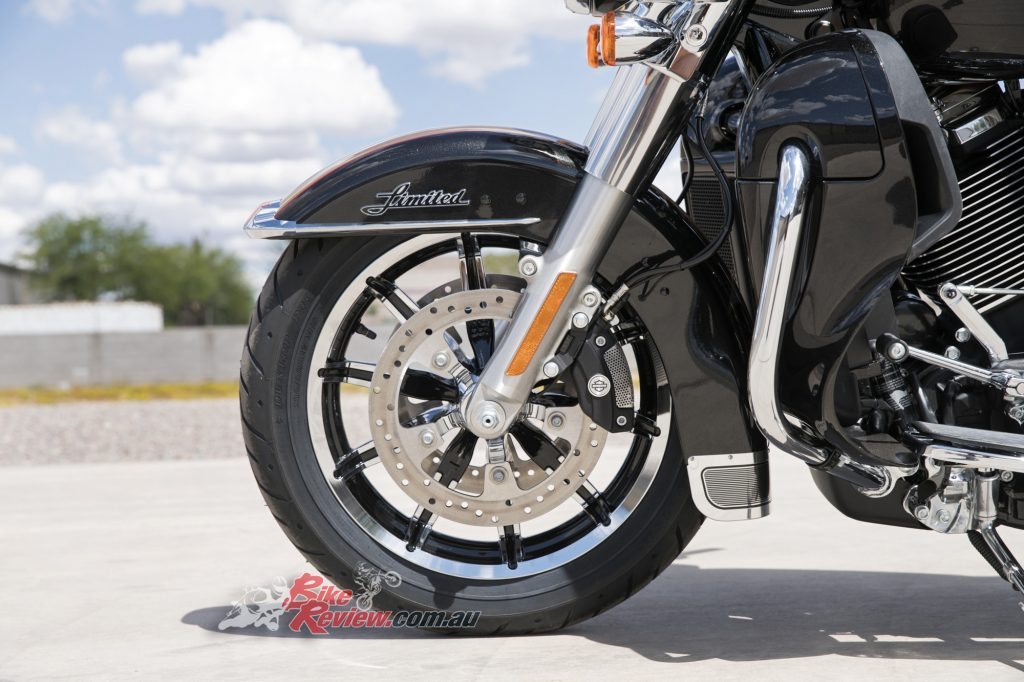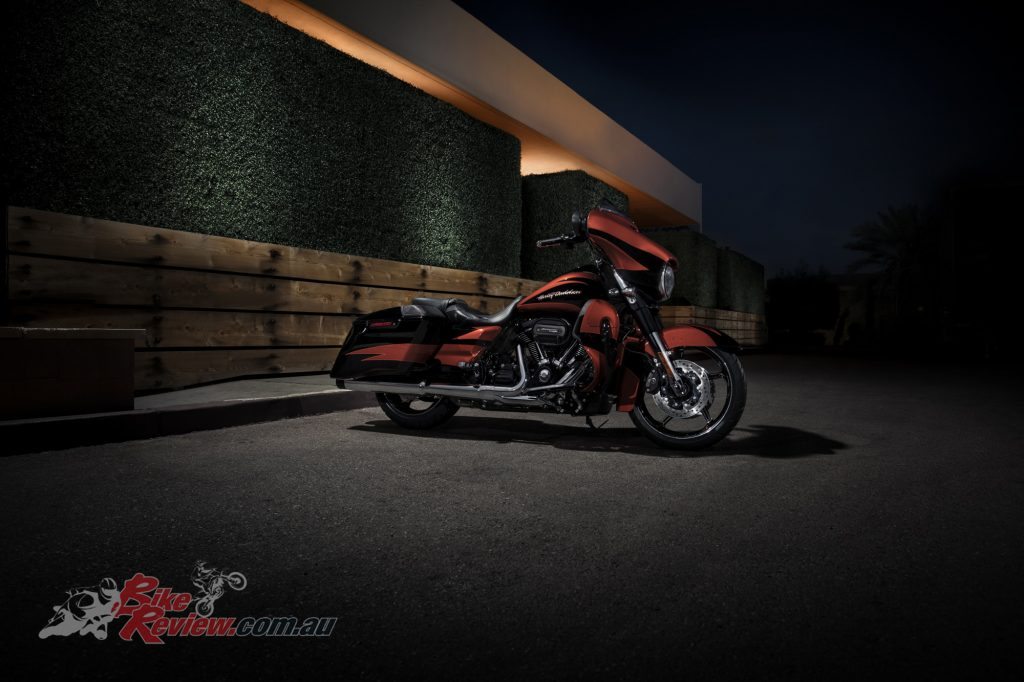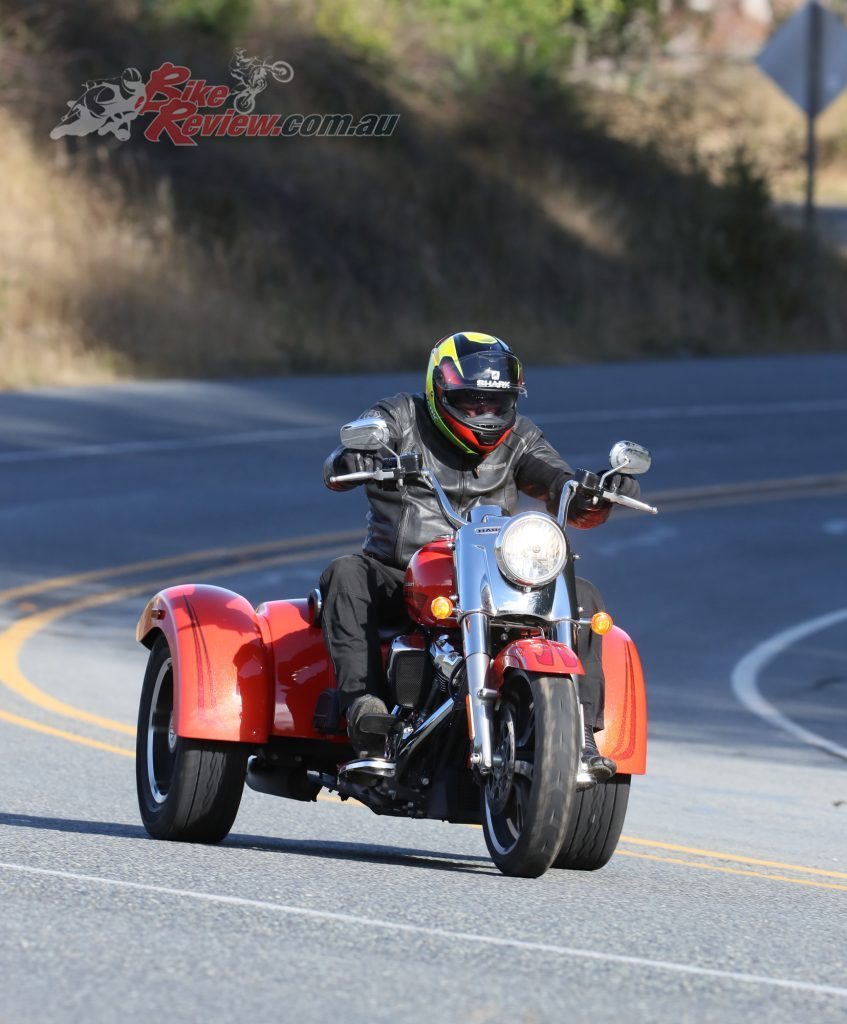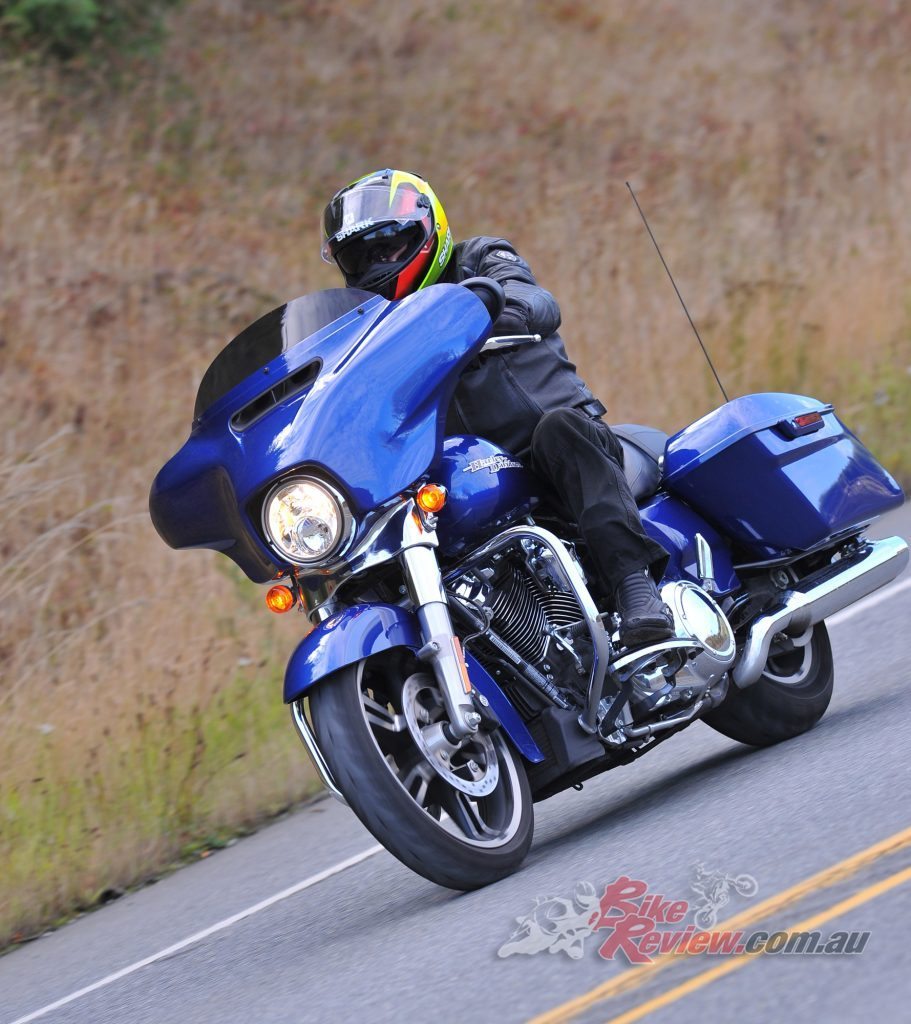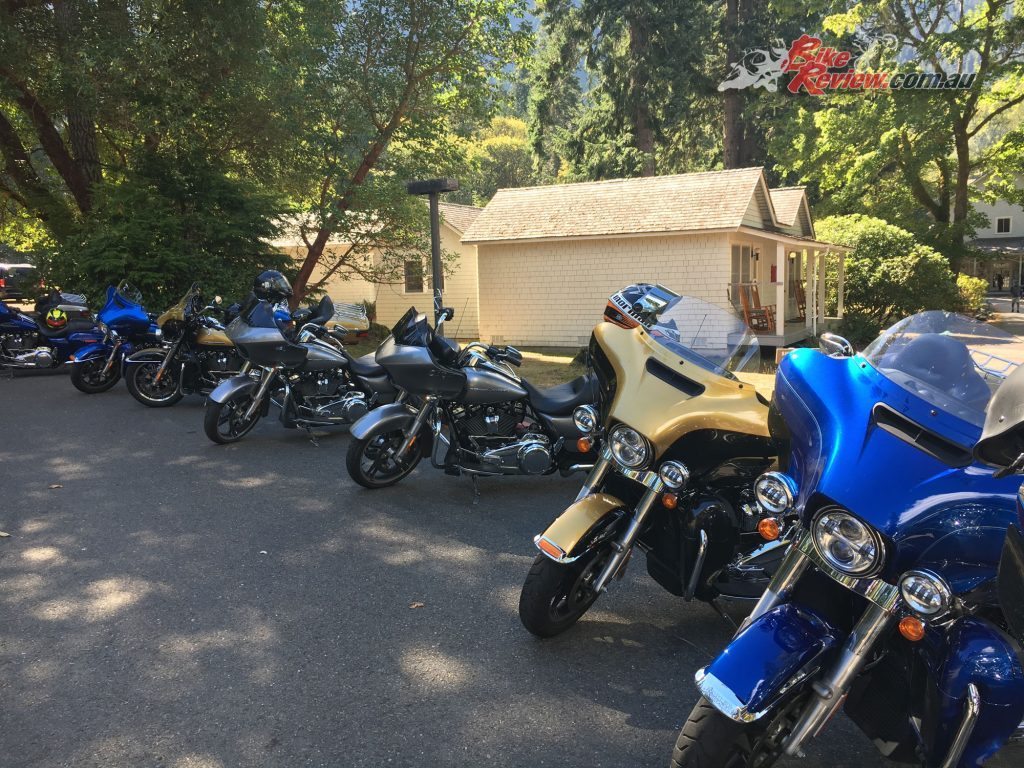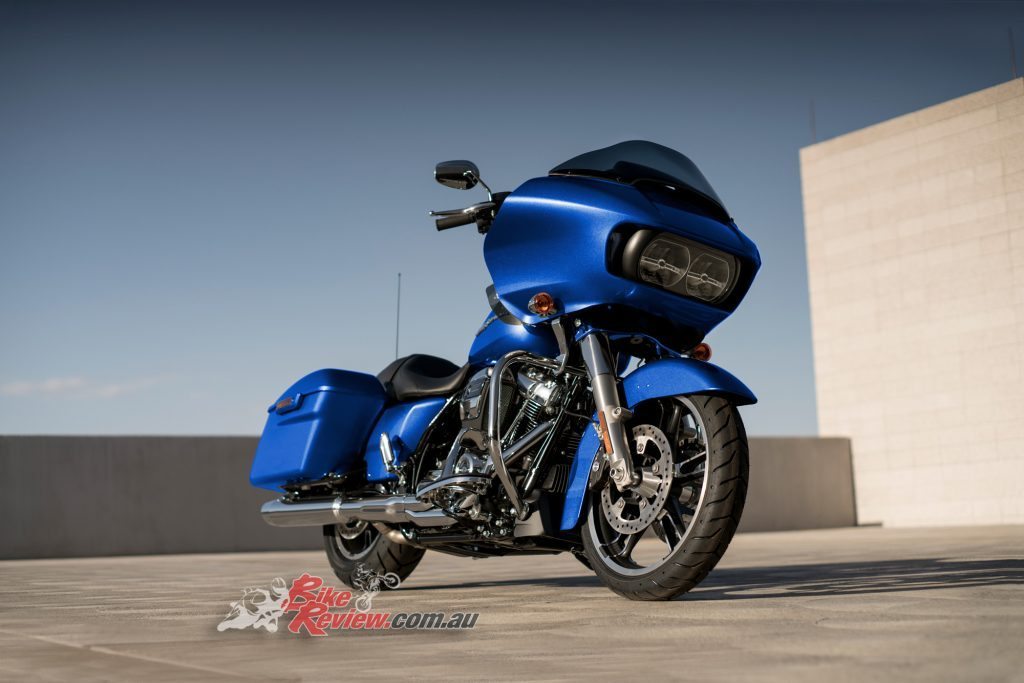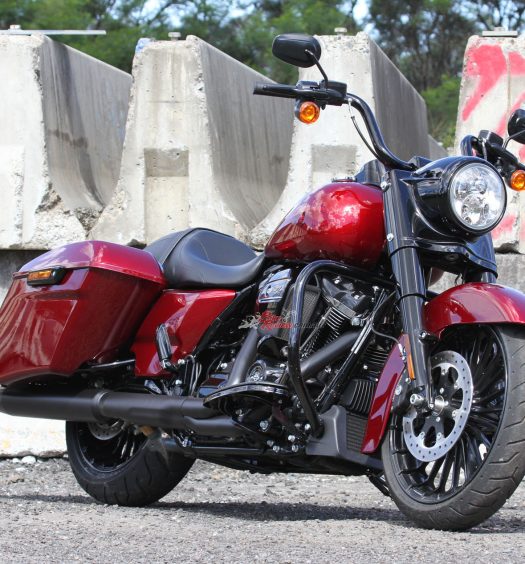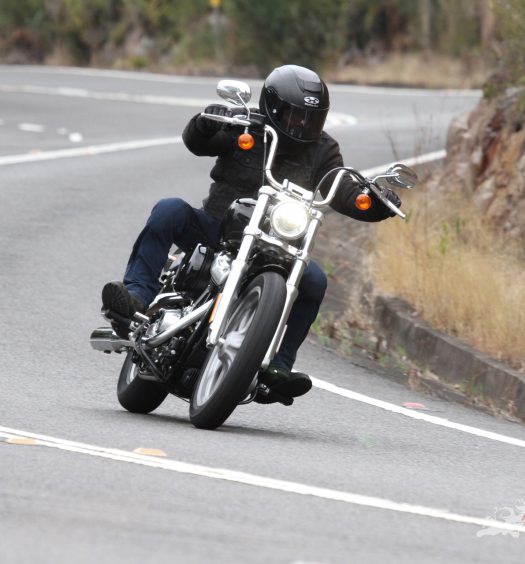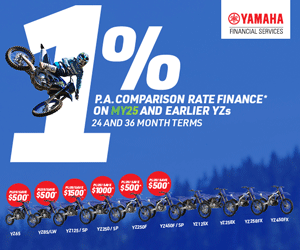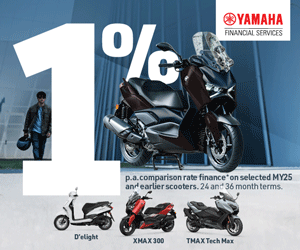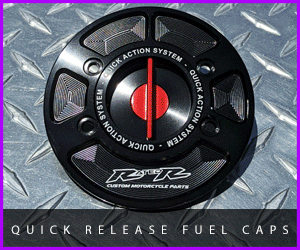Miles tests out the 2017 Harley-Davidson Milwaukee-Eight powered touring line in America. Here's his review. Test by Miles Rangely, Photography by Harley-Davidson
When Harley-Davidson set out to make changes, their marketing mentality has always been ‘slow and steady’. Throughout the history of the H-D Motor Co, they’ve never rushed into a project; instead they always meticulously plan any major developments.
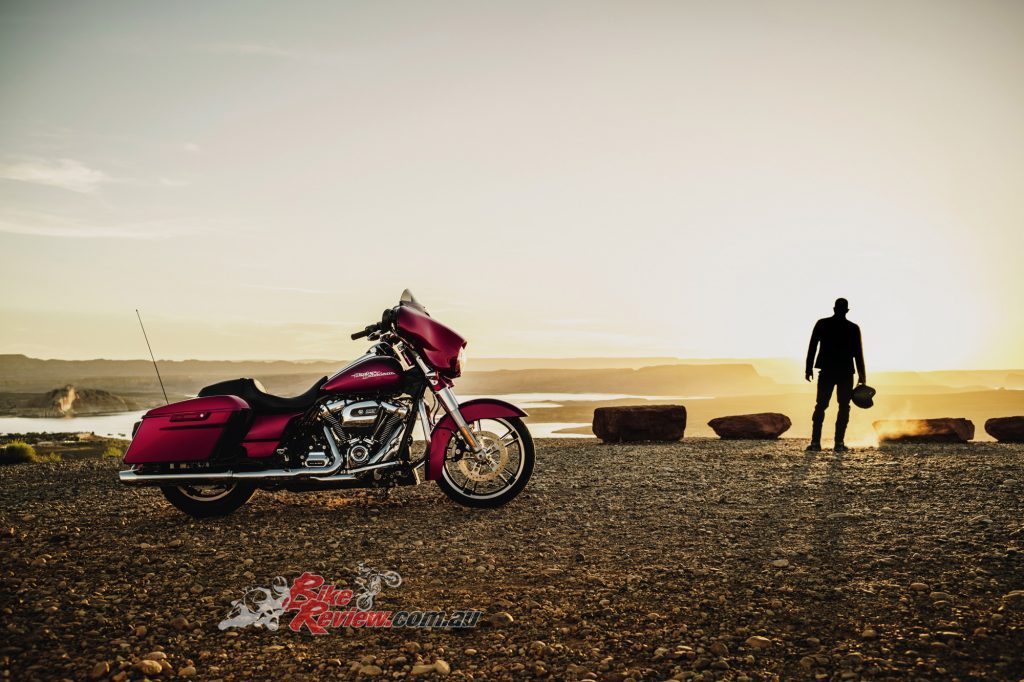 Of course something they have also recently undertaken since the introduction of the Rushmore range, is listening to customer focus groups – probably one of the best approaches when it comes to carving out the company’s future.
Of course something they have also recently undertaken since the introduction of the Rushmore range, is listening to customer focus groups – probably one of the best approaches when it comes to carving out the company’s future.
So with whispers of a new engine being released, the rumours were all realised when we received an invite to Seattle to test the new Touring Range, all fitted with the Milwaukee-Eight, a new 107cubic inch motor with four-valves per cylinder.
It’s the first new engine in over 17 years since the introduction of the Twin Cam, and is an advancement H-D’s designers knew was required, especially with so much competition now coming from other manufacturers, namely Indian and Victory.
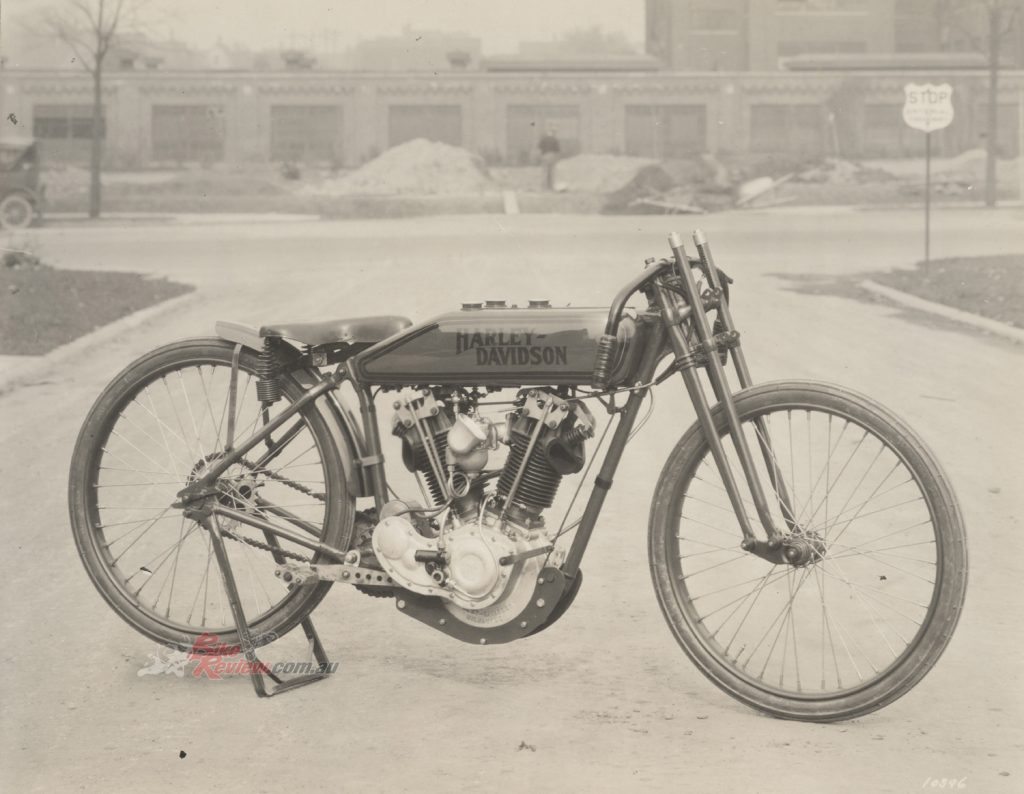
The 1916 Harley-Davidson eight-valve racer attracted a huge premium to ensure only factory riders had access.
Although you may not realise, eight-valve heads are nothing new for Harley-Davidson motors. In fact, they first released an eight-valve motor for racing back in 1916, which was developed by William Harley with help from H-D’s Race Engineer, Bill Ottaway. Ottaway originally developed a four valve single and using the 1911 V-twin as a base he and Bill Harley then went on to create the eight-valve racer.
These were the bikes that created the famous Harley-Davidson Wrecking Crew! The original eight-valve racer was offered for public sale at $1500 – a very hefty price tag considering the price of a stock V-twin was just $285.
The price difference was deliberate as H-D had to offer them for sale to conform to the racing regulations but at the huge price nobody could afford them. This meant only factory racers acquired them and no privateers.
Now a century later, Harley-Davidson have redesigned their ‘Big Twin’ motor to feature four valves per cylinder – much larger though than the 61ci of the 1916 version – available in two displacements, an oil-cooled 107ci (1750cc), and a twin-cooled 114ci (1870cc).
I suppose you could say ‘Everything old is new again,’ although that is far from an accurate representation as the new Milwaukee-Eight engine went through some vigorous research and development before being released in the 2017 Touring Range.
Using focus groups, Harley-Davidson found that riders were requesting a cooler running engine which was no surprise, considering the 96ci and 103ci Twin Cam always received complaints regarding excess heat being dispersed from the engine on to the rider’s legs.
Twin Cam engines featured ‘HEMI’ heads which had a high dome and lots of surface area, therefore creating high amounts of excess heat which in turn was then absorbed by the engine parts, whereas the new eight-valve head has a flatter design with less surface area resulting in most of the heat being kept inside the combustion chamber.
Other factors helping with heat are the use of two plugs per cylinder to fire the air fuel mix plus a redesigned exhaust system to keep the heat further from the rider – which is a staggering 100 degrees less in temperature. And on the CVO Street Glide and Ultra Limited twin cooling is retained.
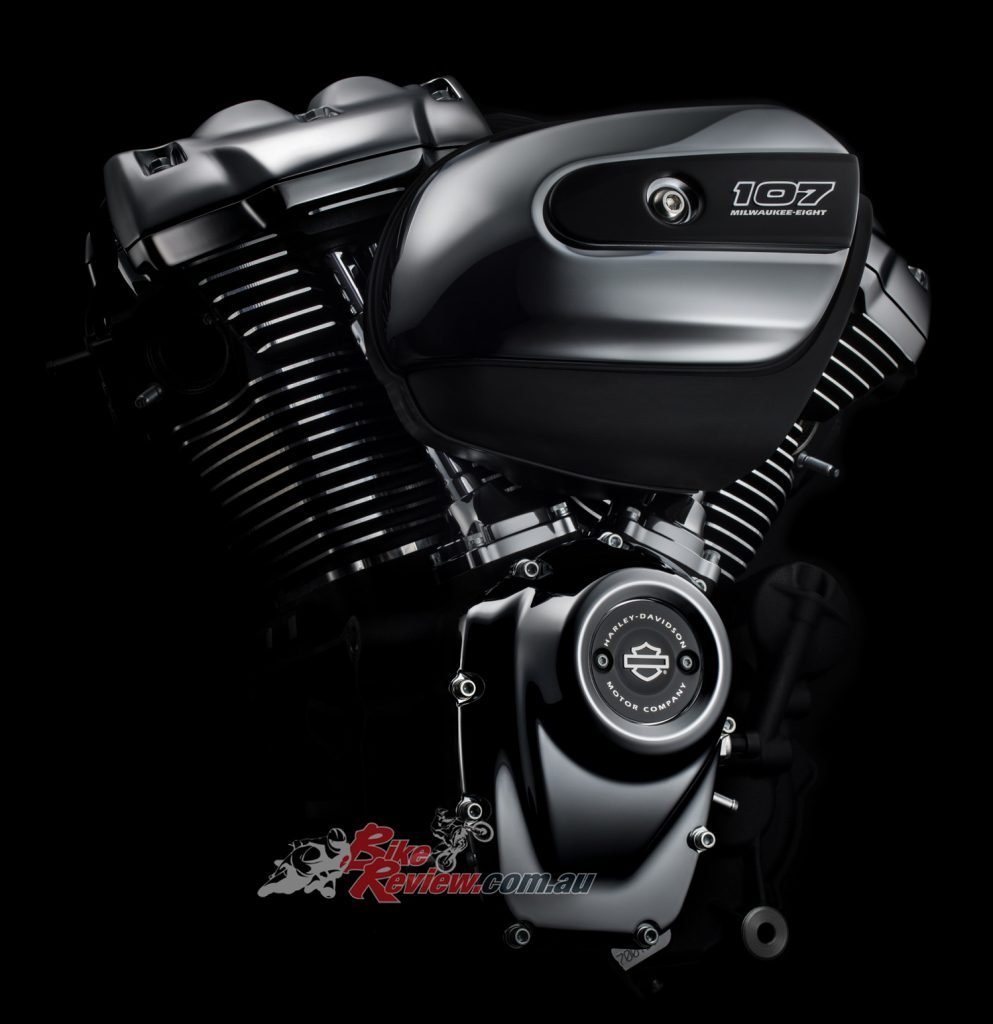
A smaller surface area on the new cylinder heads helps reduce heat transferred to the rider, with dual spark plugs insuring better combustion.
The engine timing is also more advanced than previous engines with a switch to a knock sensor insuring more precise firing, and the use of hydraulic lifters remove the need to adjust valves ever again. The newly designed flywheel has also been reweighted to increase inertia by 20 per cent.
Harley-Davidson Vice President of Styling and Product Development Strategy Scott Miller said of the Milwaukee-Eight powerplant, “The guiding principle behind the Milwaukee-Eight engine was our voice of customer research from every region of the world. Riders asked us to create a new engine designed to enhance their motorcycle touring experience in every way.
“Those same voices also demanded that we stay true to our legacy and respect the defining elements of a Harley-Davidson V-Twin. It was a big challenge, but one we (at Harley-Davidson) have met. With the Milwaukee-Eight, a new era of Harley-Davidson power, performance and innovation has been forged.”
Operated by the single four-lobe camshaft, traditional pushrods and roller-tipped cam followers, the forked rocker arms are reported to need little if any adjustment over the life of the engine. Another change is that the ECM has been altered to a torque-based system rather that the old mapped based system.
When a rider twists the throttle its position will now be interpreted as a call for a torque level and not a throttle setting. The air intake and exhaust flow is also up by 50 per cent which you can instantly feel, while the power and torque continues right through the entire range and keeps on pulling.
The whole bottom end has been redesigned too, extensively decreasing vibration, even the rubber mounted motors will now feature an internal balancer that is run off the crank, which is something else I noticed as soon as I took off on the first test bike from the hotel in Tacoma, a Streetglide.
The vibration from the engine is almost uncharacteristic of a Harley, reduced by almost 75 per cent. Apparently at one stage H-D tested balancers that removed virtually 100 per cent of the vibration. However the unanimous feedback was that it wasn’t right as a Harley-Davidson (V-Rods excluded), as they need some form of engine vibration – something that has always been a large factor of a H-D’s appeal.
The cases have also been redesigned to not only accommodate the new engine balancer but to also take the engine back to a single four-lobe camshaft. The cases are reported to be 23 per cent stronger while still maintaining a similar weight to the Twin Cam cases.
The single camshaft is, like its predecessor, driven by a chain with an automatic tensioner and this is in an effort to keep the engine quiet, assisting with an increase in the exhaust note.
The fork-and-blade conrod set up with roller big-ends remains in place, but the rods are larger and stronger to handle the increased torque of the Milwaukee-Eight. The charging system has also been upgraded to a three phase 48 Amp system using an 18 pole alternator which will supply 25 amps at the 850rpm idle and more once you’re moving.
Of course the way an engine looks is also a huge part of what the Harley-Davidson buyer wants, so the design brief was like always to not stray too far from the traditional look yet still supply the Motor Co with a strong new motor – the rocker covers depict a strong muscular look and the 45° V-Twin cylinders scream Harley-Davidson tradition.
What was also exciting at the launch was having Harley-Davidson’s Chief Powertrain Engineer Alex Bozmoski at the presentation, “The Milwaukee-Eight engine retains the classic Harley-Davidson 45-degree V-Twin design. It also retains the power characteristic that is the real legacy of the Harley-Davidson Big Twin: strong low-end torque with a broad, flat power curve through the mid-range that’s ideal for the Touring motorcycle rider.”
Big Boz was also on hand over the two days to ask whatever questions you might have had, which was great, especially having someone so knowledgeable and directly linked to the design of the engine joining us on the ride.
Another interesting comment about the styling of the new engine was made by Harley-Davidson Director of Styling Brad Richards, “The Milwaukee-Eight engine is styled to project power. I compare it to the back of a swimmer, lean in the waist but broad and muscular in the shoulders.
“The rocker covers look like skin stretched taut over muscle, like the rocker arms are about to burst out of the engine. For the first time since the Knucklehead, the rocker covers reflect the action going on below, and they are massive! When you sit on the bike, you can look down and see more of this engine.”
THE RIDE
So with all the information digested, it was time to head out and enjoy what the new range of motorcycles had to offer. Exiting the hotel doors to pouring rain wasn’t the start we were all looking for, but that’s just how it goes sometimes, we get to test the bikes in all sorts of conditions.
As it would turn out, we enjoyed great weather the following day, which gave us the chance to really test out the new engine.
With a large contingency of riders, which included other journos from around the world, it meant riding every model was a challenge, especially when some of the other riders from Mexico found a bike they were comfortable on, it was sometimes hard to pry it out from underneath them!
I think some of it had to do with them not feeling too confident on some of the other models due to a little lack of experience…not in the group of Aussies though, which is always refreshing knowing your fellow peers can ride. I’d say that was one of the main reasons we always found ourselves at the front of the pack, safely ahead of any riders behind.
The other aspect that comes into it is trust, and after riding with each other for so long on launches all around the world, it’s easier to predict what they’re going to do through the corners or over a hill.
Due to the inclement weather on the first day, there wasn’t a lot of bike swapping, which is why I found myself riding the Street Glide for most of the day – followed by the Road Glide Special – not a problem though, considering they’re both great bikes to ride, and easy to flick around through the corners.
I could feel the new 107 motor working its magic too, providing a much better power curve with useable torque right through the range, and smooth delivery too. I did get my arse on a Road Glide Ultra for a few miles as well, but it was the next day when the sun decided to make an appearance that I got to test a lot more models.
First up it was a quick blast on the Road King, which has always been a bike I’ve admired, and once again, fitted up with the new 107, the King is sure to keep dominating the highways in Australia.
From there I jumped on an Ultra Special, which again really benefits with the new Milwaukee-Eight motor. What were already great bikes for touring just got a lot better, especially with changes to the suspension.
Up front they’ve developed a unique solution with Showa to decrease the weight over a cartridge system, improve high speed stability while also improving low speed ride quality.
To achieve this the new 49mm fork features ‘dual bending valve fork technology’ which encases variable chambers in the shock separated by a thin washer, and as movement pushes the dampening fluid faster, it moves the washer which opens up the secondary chamber, allowing more fluid to move through leading to more range of motion.
At slower speeds the washer doesn’t move which means the fluid isn’t moving as much making it more composed. You can instantly feel the increase in stability through the front end too, not only moving around at traffic speeds but also when you’re tipping it in through the corners, with just a touch of the front brakes allowing you to easily change lines and not feel the weight through the bike.
This is matched at the rear with the new emulsion shocks that we’ve already seen being utilised throughout the Sportster and Cruiser range.
They feel great on the big boys too with no hint of squatting or wallowing through the corners at high speed and they also increase the pre-load capacity by 30 per cent. Another great feature is that you now only need one hand to make any adjustments instead of the air system on previous models.
The gearbox felt noticeably quieter and smoother too, achieved by the use of a hydraulic Brembo clutch, a balancer, an anti-back lash gear (spring loaded first get) and a slimmer primary.
There were a couple of CVO models amongst the pack too, with the CVO Limited and the CVO Street Glide, which was definitely my favourite if I had to choose – both models of course with the 114ci motor.
I also took the opportunity to ride the Freewheeler, the trike that at this stage has only made it as far as New Zealand. They’ve been available over there for a while now, but hopefully it won’t be long before we see them on Australia’s roads, because they’re a lot of fun to ride, and now with the larger motor, they don’t lack in the power department either.
The Freewheeler is of course the smaller of the two trikes, with the Tri-Glide having a little more road presence, but for me it was the little trike that seemed to provide more fun – and really brought out the hoon in everyone.
The route taken for the ride was perfect too, taking us all over Washington State from Tacoma to Port Angeles and back again the next day. With beautiful views through wilderness and backdrops of pine tree forests and mountains before sweeping down alongside lakes and rivers, it was a great ride with a variety of roads to really test out the bikes.
We enjoyed lunch at the Eagle Creek Saloon on the first day and enjoyed the cruise alongside the lakeside during the afternoon before making our way into Port Angeles – a riverside town where we spent the night.
The next morning we set off for our lunch stop at the Lake Crescent Lodge which is nestled in among mountains and sits beside one of the biggest fresh water lakes I’ve ever seen.
It turns out we weren’t far from the Canadian border either, which made a lot of sense considering some of the breathtaking scenery we had just enjoyed over the last couple hundred miles.
After a great lunch in the old cabin by the lake, we were back on the bikes and heading for Tacoma again, which meant slowly but surely the traffic increased and we left the postcard scenery of the woodlands behind as we began rolling through populated towns before hitting the interstate.
All good though, just gave us another opportunity to see what the new motor felt like stretching its legs on the highways, and again, no criticism here, a great engine through and through.
The only downfall is that it felt like in the blink of an eye we were heading back home again, and we were. But with a world launch that included wave after wave of journos from around the globe riding over the next two weeks, H-D had to keep it all on the move. And although it may have only been a couple of days spent riding the new touring range in the US, it was more than enough to get a feel for the Milwaukee-Eight, and what a sensational motor it is.
Of course in 2017 it’s just the touring range to get the upgrade, but hopefully it won’t be long before we start seeing it rolled out in some of the other models.
What I do know for sure is that I’ve gotta be quick to sort out a long term test bike, especially with a few long trips coming up and Christmas almost upon us. Maybe it’s time to go visit my ol’man in Tasmania again…
The Verdict | Preview: 2017 Harley-Davidson Milwaukee-Eight Range
Great new engine
More go and better technology…


